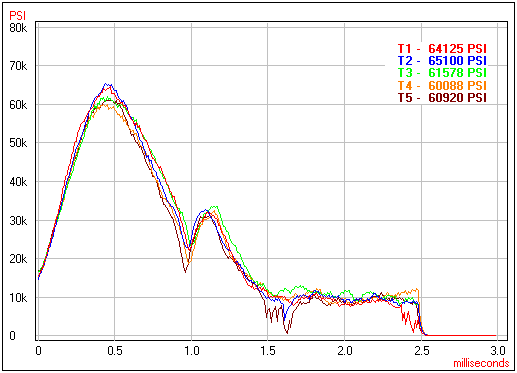I'd like to try to capture events, such as those seen in the graph, from a Vishay 125UN strain gauge.

The time between events is on the order of 15 seconds to a minute, or so. The individual events are (as seen in the graph) on the order of a few milliseconds. I'm not sure how many samples there are in the data that's graphed, but it's probably a few hundred, so let's say that samples will be taken on the order of every 10 microseconds.
My thinking, so far, is that I'll need to build a shield that uses a more-real-time µC to monitor the strain signal, watch for some trigger level, and record something like 1000 samples after the trigger level is reached. Maybe the shield could signal the N+ once the samples have been collected and the N+ would then fetch them and write them to a .dat file on a micro SD.
If I use a 16 bit ADC on the shield, I guess each event would be about 16K. If the helper µC has 16K of RAM and i2c, I guess it could signal the N+ (digital out on the helper connected to digital in on the N+) and the N+ would then pull the sample data via an i2c connection between them? The data xfer from helper to N+ to SD doesn't need to be super fast and I could put an LED on the shield indicating "transfer in progress" so that I know when I can or can't kick off the next event.
Does this sound like a reasonable approach? Are there simpler approaches? Any suggestions as to what would be a good helper µC, keeping in mind that ease of programming and an active user community are more important than cost of the device.
Thanks in advance for any advice!















